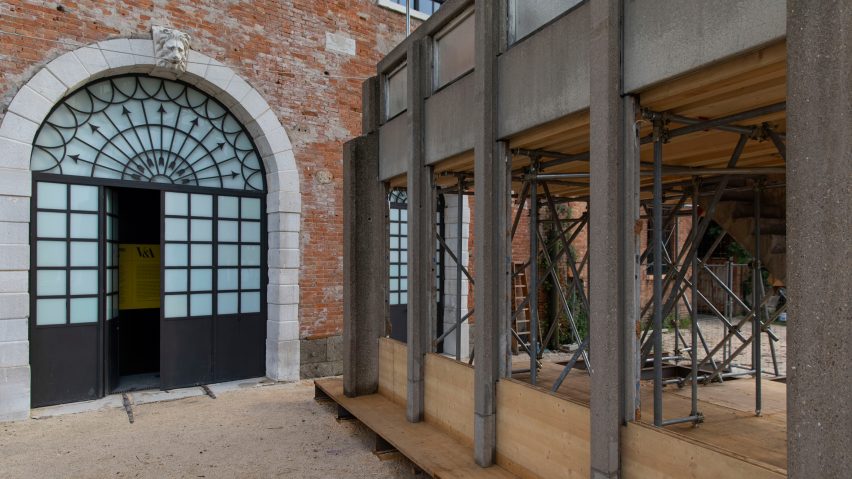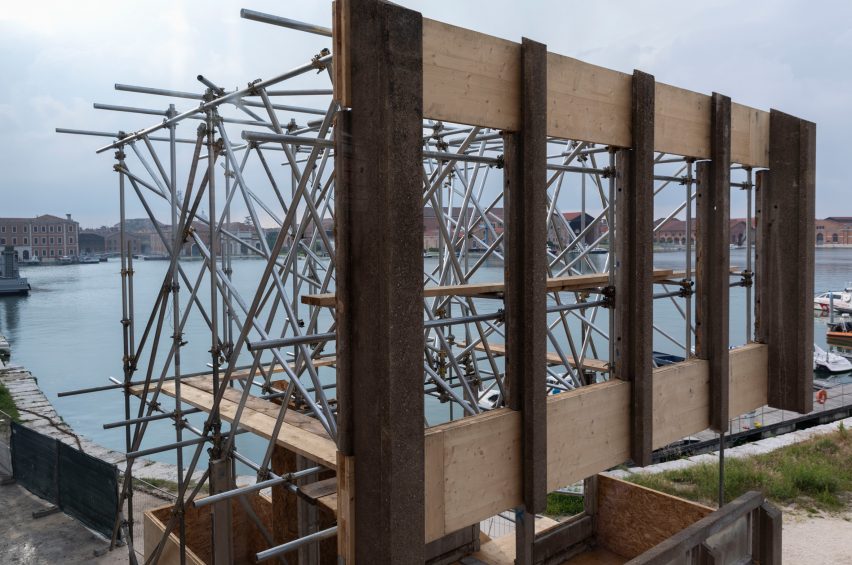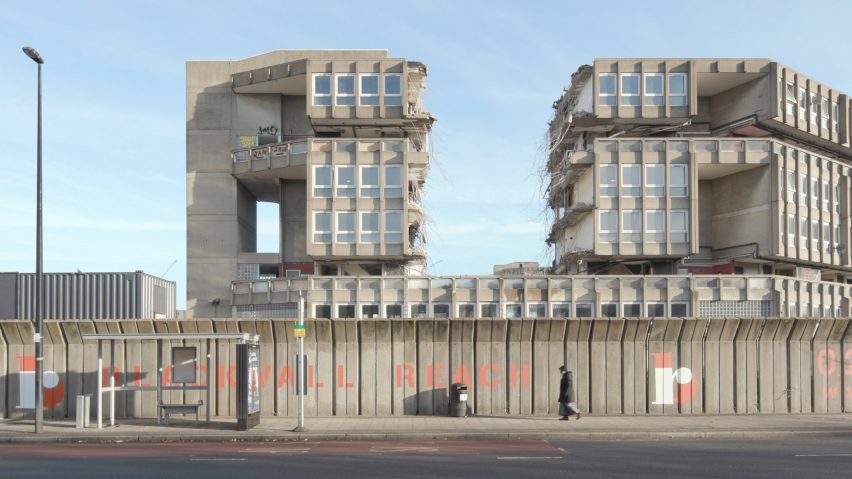
V&A director defends Robin Hood Gardens display at Venice Biennale against claims of "art-washing"
Tristram Hunt, director of the V&A museum in London, has defended the institution's decision to exhibit a section of the Robin Hood Gardens housing estate at the Venice Architecture Biennale.
Writing in The Art Newspaper, Hunt dismissed the "keyboard warriors and 'art-wash' agitators", who have criticised the museum for acquiring and exhibiting fragments of the part-demolished brutalist estate designed by Alison and Peter Smithson.
"Critics think that the V&A has no place acquiring such an ugly display of brutalist modernism," he said. "What is more, they argue, Robin Hood Gardens was part of a failed social experiment of inhuman modernism, which we should not be using public funds to embalm."
"However, our role is to think beyond fashion and to preserve that which has significant design merit, and with which future generations will seek to engage."

The V&A announced that it was acquiring part of Robin Hood Gardens shortly before demolition started in December 2017. It has preserved an entire apartment, including the building's famous "streets in the sky", as well as a smaller large section, which it is showing in Venice.
The acquisition prompted criticism from industry figures. There were also protests at both the biennale exhibition, Robin Hood Gardens: A Ruin in Reverse, and at the museum in London. Campaigners argued that the V&A was implicit in social cleansing.
"Role of the museum is not as a political force"
"We have encountered siren voices on the cultural left and right opposed to the entire project," said Hunt, who became director of the V&A in February 2017.
"Better that the architecture is lost forever, they assert, than to be involved in 'art-washing' gentrification and the dispersal of local communities."

Hunt said that museums should not necessarily all be campaigning organisations, and that the V&A's duty is to be an unpolitical, neutral collector.
"Behind this critique is the increasingly popular conviction that not only can museums not be neutral sites, but that they also have a duty to be vehicles for social justice," he said.
"Rather than chronicling, challenging and interpreting, we should be organising demonstrations and signing petitions. I am not so sure," he added.
"I see the role of the museum not as a political force, but as a civic exchange: curating shared space for unsafe ideas. And in an era of absolutist, righteous identity politics, these places for pluralism are more important than ever."
V&A "is not a campaigning organisation"
Built in 1974 in east London, Robin Hood Gardens is seen by many as an important example of brutalist housing. It consists of two concrete slab blocks, with raised walkways, or "streets in the sky", that were designed to foster a sense of community.
The demolition of the estate is taking place despite a long-running campaign to save the building, supported by architects including Zaha Hadid, Toyo Ito, Richard Rogers and Robert Venturi. The V&A did not join the campaign to save the building.

It will be replaced by a new housing development designed by London studios Haworth Tompkins and Metropolitan Workshop, and Scandinavian firm CF Møller.
Olivia Horsfall Turner, co-curator of Robin Hood Gardens: A Ruin in Reverse, also supported the V&A in its decision to remain impartial.
"The V&A was not involved in that campaign because the V&A was not able to be involved in that campaign," she told Dezeen.
"The museum is not a campaigning organisation, it’s an institution that collects and invites people to think about the objects in the collection."
"V&A has left itself open to being accused of exploitation"
Sir John Soane's Museum curator and Dezeen columnist Owen Hopkins responded to Hunt's statement by saying that the Robin Hood Garden acquisition was different to previous purchases made by the museum.
"The rationale for these past instances was their exceptional design quality, but with Robin Hood Gardens the reported rationale is to start a discussion," Hopkins told Dezeen.
"However, the discussion they've started is not about the plight of social housing and tenants – which is obviously already happening – but about the role of the museum itself."
Hopkins believes that the V&A's promotion of the acquisition, including its decision to exhibit it at Venice, is inviting criticism.
"If they were going to acquire the fragments, it would have been better to keep the whole thing under wraps and announce it later on when the dust has literally settled," he continued.
"By courting media attention in the way they have, not least by sending the fragment to Venice, the V&A has left itself open to being accused of exploiting the demolition of Robin Hood Gardens."